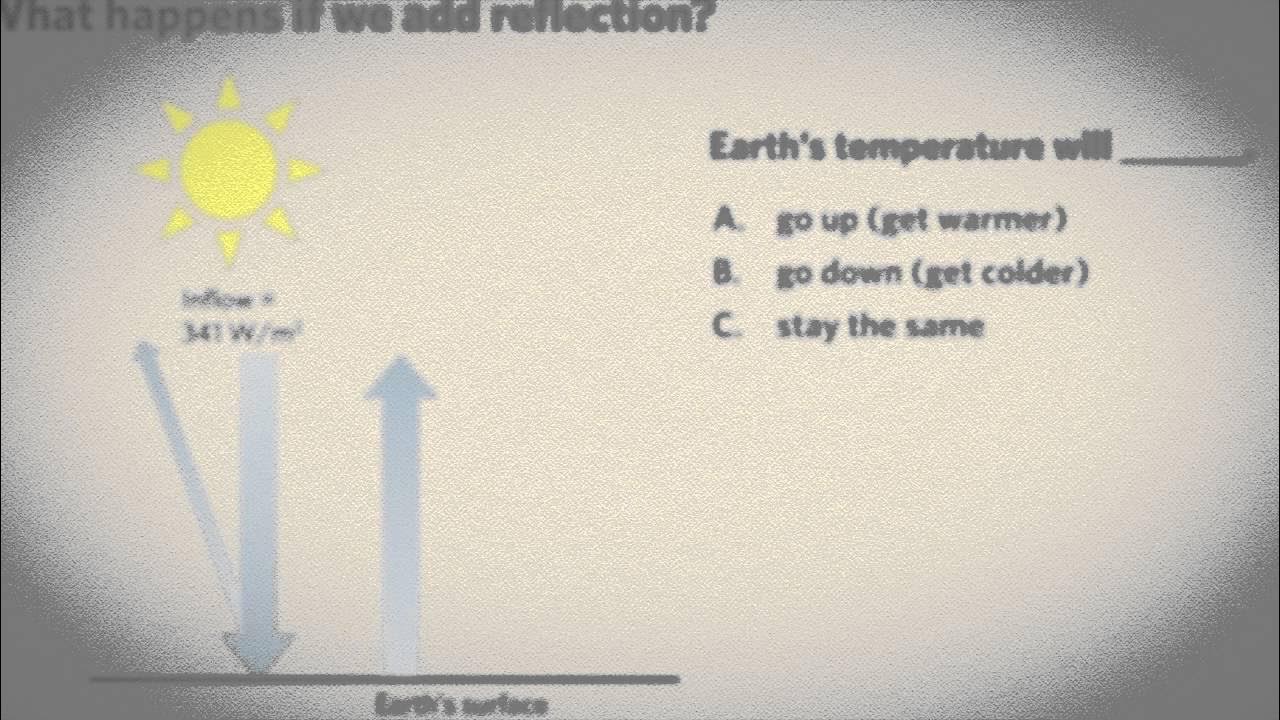NASA | Supercomputing the Climate
Summary
TLDRThis video delves into the pivotal role computer models play in enhancing our understanding of weather, climate, and the environment. NASA utilizes these models to simulate atmospheric conditions and climate trends, using data from satellites to make accurate predictions and projections. The process of data assimilation ensures that weather models remain precise by continuously incorporating new observations. From forecasting storms like Hurricane Katrina to projecting climate trends over centuries, NASA's powerful computing technology and data help scientists analyze and predict our planet's future climate with unmatched precision.
Takeaways
- 😀 Weather forecasters, airline pilots, and experts in various industries rely on computer models for predictions and simulations.
- 😀 NASA uses computer models to enhance its understanding of the Earth, the solar system, and the universe by processing satellite data.
- 😀 Data from NASA satellites is used to create computer simulations that help scientists model the Earth's atmosphere, land, and oceans.
- 😀 NASA scientists build numerical models based on observational data to make projections about weather and climate.
- 😀 With advancements in computer technology, weather models have become more powerful and detailed, allowing for more accurate simulations.
- 😀 The GEOS-5 model creates highly realistic simulations of atmospheric features, such as clouds, to improve weather predictions.
- 😀 Weather models aim to provide the most accurate predictions for up to ten days, while climate models predict long-term trends.
- 😀 In 2005, NASA used satellite data to monitor Hurricane Katrina's intensity, size, and path, improving storm tracking.
- 😀 Data assimilation combines model predictions with real-time observational data to refine weather and climate forecasts.
- 😀 MERRA is a climate model that uses over 30 years of satellite data to offer a detailed climate analysis and historical weather event studies.
- 😀 The GISS model extends climate predictions across centuries and projects future trends, providing essential data for long-term climate research.
Q & A
What role do computer models play in various industries?
-Computer models are used in various industries, including weather forecasting, aviation, and scientific research, to simulate complex systems and predict outcomes based on data.
How does NASA utilize computer models in its research?
-NASA uses computer models to enhance their understanding of Earth, the solar system, and the universe. They input data from satellites into simulations to better comprehend phenomena such as weather patterns and environmental changes.
What is the primary function of weather models like GEOS-5?
-Weather models like GEOS-5 simulate the Earth's atmosphere at a high resolution, capturing fine-scale cloud features and providing weather predictions up to ten days in advance.
What is data assimilation in the context of weather models?
-Data assimilation is the process where weather models run simulations to predict atmospheric conditions, which are then corrected using observational data. This cycle repeats, integrating new data to improve the accuracy of forecasts.
How often are weather models updated to ensure accuracy?
-Weather models are updated every six hours to include the latest observational data, ensuring forecasts remain as accurate as possible.
What distinguishes climate models from weather models?
-Climate models predict long-term trends over extended periods, such as decades or centuries, whereas weather models focus on short-term forecasts of atmospheric conditions for up to ten days.
What is MERRA and how does it contribute to climate research?
-MERRA (Modern Era Retrospective Analysis for Research and Applications) is a climate model that incorporates over 30 years of satellite data to create a comprehensive data record, aiding meteorologists in understanding climate variations and past weather events.
How do NASA's satellite data enhance climate research?
-NASA's satellite data provide extensive observational information on Earth's atmosphere, land, and oceans, which is crucial for building accurate climate models and improving the understanding of long-term climate trends.
What is the goal of the Goddard Institute for Space Studies (GISS) climate models?
-The goal of GISS climate models is to unravel temperature trends over long periods, such as the past 200 years, and project future climate trends to the end of the 21st century.
What is the relationship between observational data, computing power, and scientific progress at NASA?
-At NASA, the combination of vast observational data collected by satellites, state-of-the-art computing resources, and expert scientists enables significant advances in weather and climate research, pushing the boundaries of what can be understood and predicted about Earth's systems.
Outlines

Dieser Bereich ist nur für Premium-Benutzer verfügbar. Bitte führen Sie ein Upgrade durch, um auf diesen Abschnitt zuzugreifen.
Upgrade durchführenMindmap

Dieser Bereich ist nur für Premium-Benutzer verfügbar. Bitte führen Sie ein Upgrade durch, um auf diesen Abschnitt zuzugreifen.
Upgrade durchführenKeywords

Dieser Bereich ist nur für Premium-Benutzer verfügbar. Bitte führen Sie ein Upgrade durch, um auf diesen Abschnitt zuzugreifen.
Upgrade durchführenHighlights

Dieser Bereich ist nur für Premium-Benutzer verfügbar. Bitte führen Sie ein Upgrade durch, um auf diesen Abschnitt zuzugreifen.
Upgrade durchführenTranscripts

Dieser Bereich ist nur für Premium-Benutzer verfügbar. Bitte führen Sie ein Upgrade durch, um auf diesen Abschnitt zuzugreifen.
Upgrade durchführen5.0 / 5 (0 votes)






